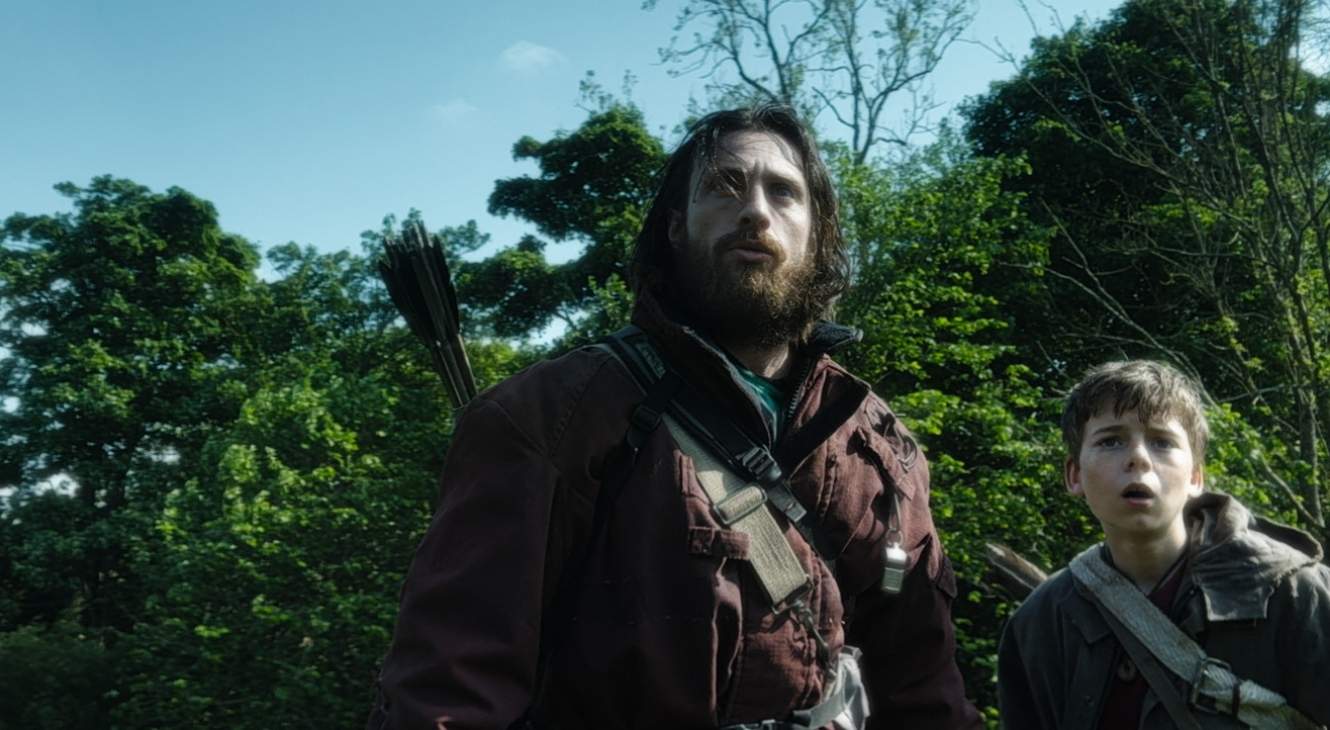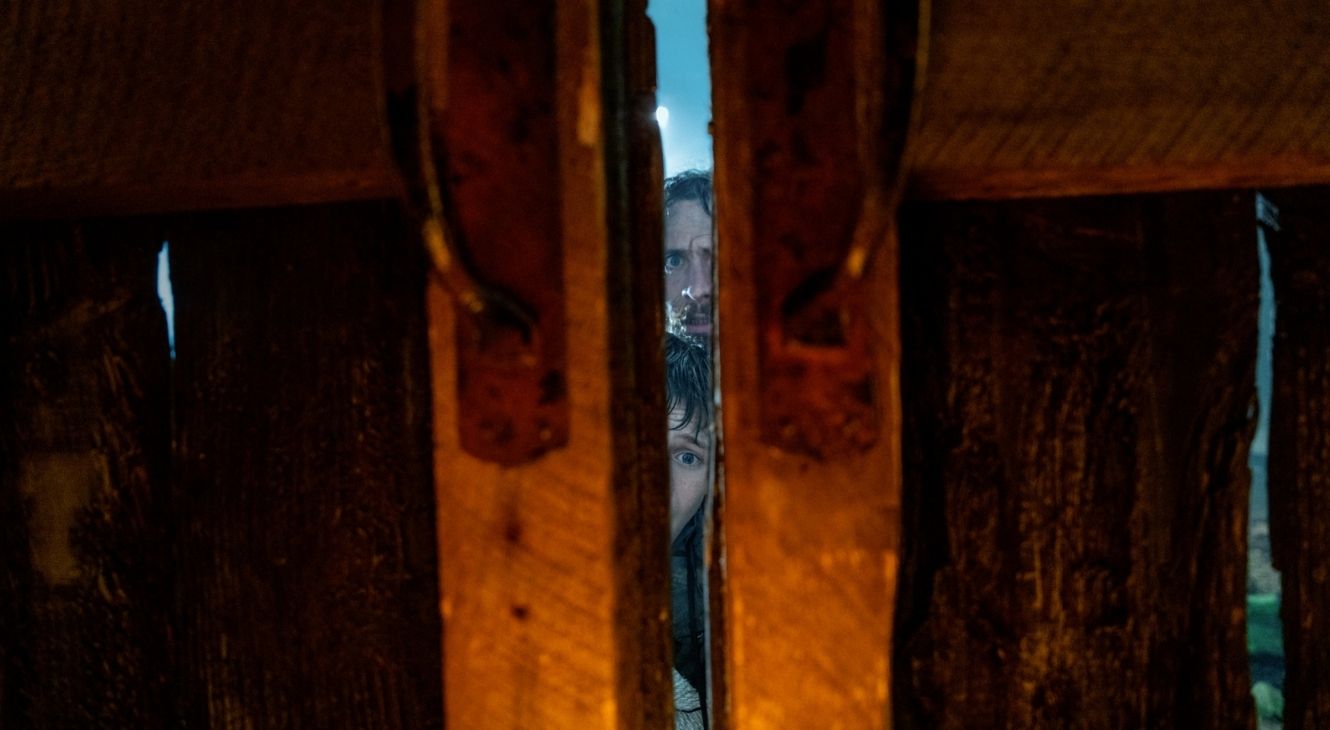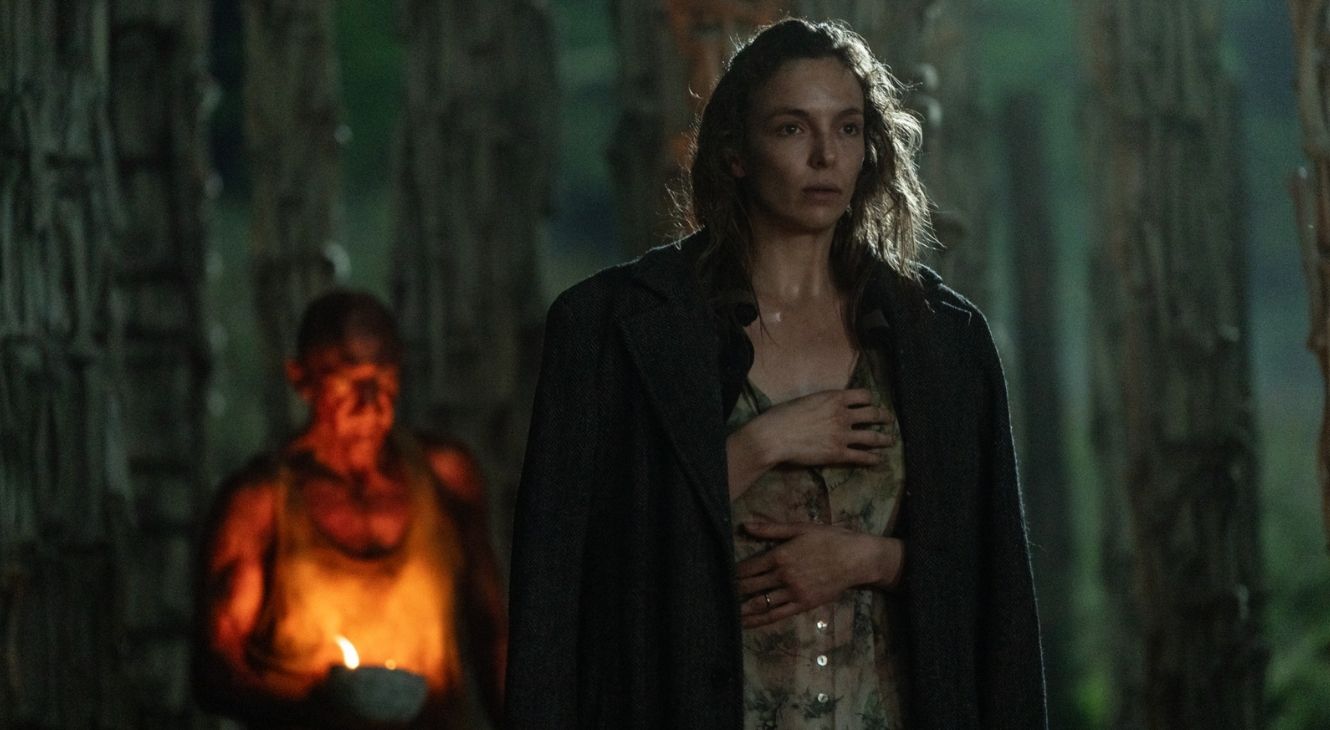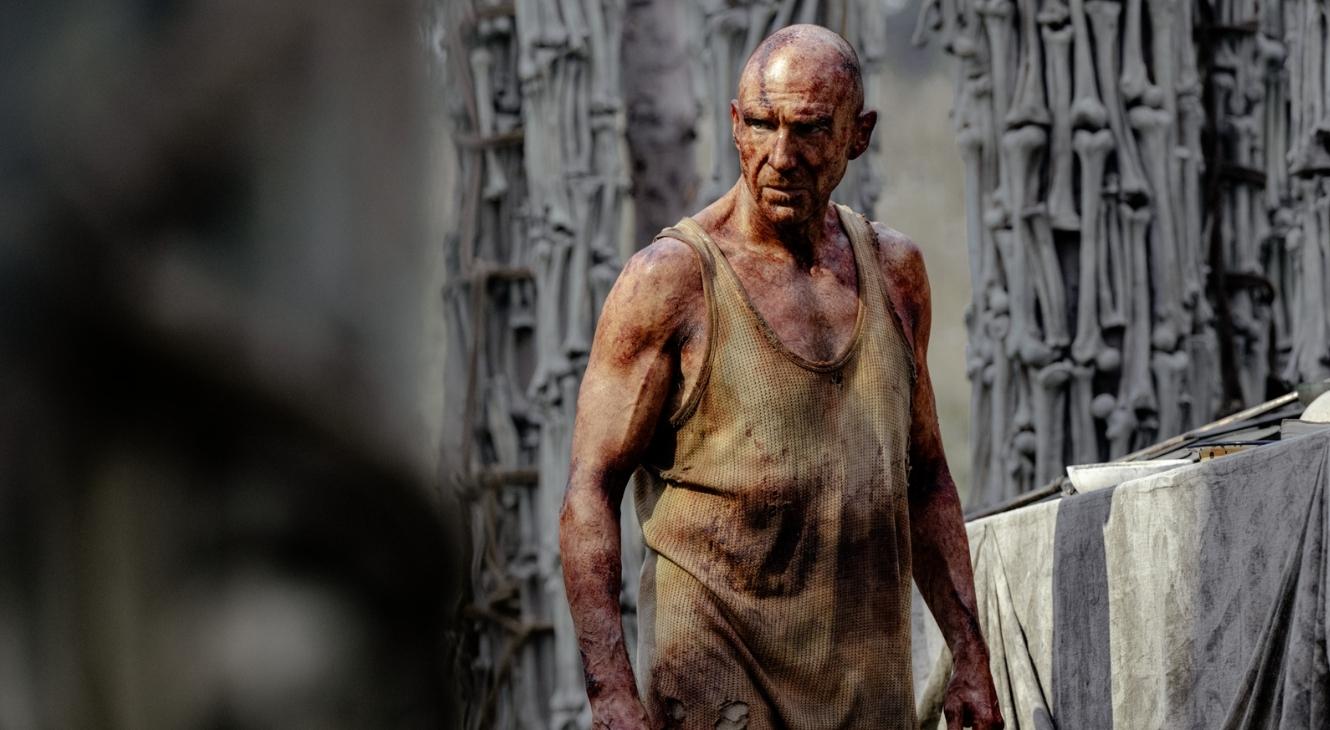Director Danny Boyle and writer Alex Garland reunite for 28 Years Later, a film that I didn’t necessarily know if we needed. While Cillian Murphy is not an actor in the film, he is one of the producers, and ultimately, this third film in the franchise belongs exactly where it is.
While marketed as a terrifying new story set in the world created by 28 Days Later, this film has more sincerity than it does brutality. In 28 Years Later, it’s been almost three decades since the rage virus escaped a biological weapons laboratory, and now, still in a ruthlessly enforced quarantine, some have found ways to exist amidst the infected.
28 Years Later focuses on one group of survivors who have made their lives on a small island connected to the mainland by a single, heavily defended causeway. It reveals itself for just hours a day at low tide, disappearing under the tide as it rises. When Spike (Alfie Williams) and his father Jamie (Aaron Taylor-Johnson) leave the island on a mission into the dark heart of the mainland, Spike discovers secrets, wonders, and horrors that have mutated not only the infected but other survivors as well.
28 Years Later is a reunion for Danny Boyle and Alex Garland, and it feels like it.

Danny Boyle understands how to make his audience uncomfortable. In 28 Years Later, Boyle keeps to the trilogy’s central cold open. He establishes the danger and the pace, and more importantly, the way of life. As the film transitions into showing the town where our protagonists live to the audience, and as we follow Jamie and Spike on their first time off the island, a voice speaks over flashes of soldiers from different eras, archers loosing their arrows in defense from a castle wall, and the infected ravounesouly ripping apart a deer.
While some may say the use of heavy cuts to startling imagery is a gimmick, Boyle does it to perfection. He twists the story tighter, making the tension build, and making you shift your weight in your seat. 28 Years Later knows how to build dread, and instead of his cuts being too frequent and nauseating, they’re thoughtful. Every cutaway is looking to add impact. The violence we see in the film is shocking. The action is brutal. Heads being pulled from bodies with a spine dangling beneath is a kind of violence.
Like the other films, blood is constant, and danger is ever-present. Yet, 28 Years Later is also a tender coming-of-age film. Boyle is looking to titillate his audience’s bloodlust that comes with infection horror, but the sentimentality always lingers. This is a film about growing up, about processing loss, and, more importantly, keeping your humanity in a world that has declared you need to lose it to survive.
Intensity is the currency that 28 Years Later deals in.

While Boyle’s direction is clear throughout, what was shocking was Garland’s script. The sensitive nature of the subject matter is handled with care. The relationship between mother and son, and even father and son, is treated as something sacred. As the world bucks all expectations, family is a beacon that grounds the film’s young protagonist. All of this makes 28 Years Later Garland’s strongest script in quite some time. While the last three minutes leave much to be desired with their death metal Teletubbies soundtrack choice, everything else reaches a height that is hard to attain.
In the first third of the film, Spike is learning how to kill. He’s learning how to be a man, and he’s learning how to survive in the world with his father. For his part, Aaron Taylor-Johnson is at his absolute best. His care for Spike is endearing, his trauma is visible from the moment we see him move bacon from his plate to his son’s, and finally, he is deeply flawed. In this section of the film, we see Spike learn hard lessons, being forced to smell and see death. To become a reaper himself and to find comfort in killing the infected.
Additionally, when Spike asks his father to detail his memory of one Dr. Kelson (Ralph Fiennes), he recounts it as a scary story. It’s a tale of seeing a man surrounded by death and not being phased so much that he has taken to burning the bodies. He’s portrayed as a lunatic in the story. He’s too far gone and lost to the wilds of this world.
This is a film about love and life as much as it is about survival.

As Spike goes on his walkabout, taking his sick mother, Isla (Jodie Comer) with him in the hope of saving her, we see him as a child. He feels smaller yet more sure of himself in a way he wasn’t with his father. But while it may be his mother’s deteriorating mental state, she is in control in a way Jamie never was when we saw them in the wild. As they reach the storied doctor, the reality emerges.
Dr. Kelson is a man who is still moved by death, not because he is crazed but because he is a pillar of kindness. He remembers each skull as a life, whereas Jamie taught his son to see each infected person as a husk with no soul and nothing to honor. The two men are figures for Spike to emulate, learn from, and ultimately respect.
It’s no secret that infection films, zombie films, are windows into our worries in the world. For 28 Years Later, it’s clear that it is warning of choosing callousness and a masculinity that shirks love in favor of survival. But ultimately, it’s up to Spike to choose his path. And going toward one way or the other leaves weaknesses and worries of their own. But balance is something he has to find on his own.
Spike is only 12. By focusing on that age, 28 Years Later is one of the most beautiful coming-of-age stories I’ve seen. Particularly for a boy becoming a young man, being taken out into adulthood too young, just because he needs to be a man. The writing isn’t subtle, but it is Alex Garland’s most thoughtful attempt at understanding human identity and position.
28 Years Later is a beautiful success.

Some moments of 28 Years Later do venture too close to over-sentimentality; however, when violence erupts, it pulls us back from that ledge and manages expectations. This is a brutal film, but it’s not a mean one. Themes like loneliness and losing people aren’t wielded like a sledgehammer. While some death scenes are shocking and sometimes wander into shock value territory, it never stays there. It interrupts the world and the love, and reminds the viewer where we still are – in a harsh world, with little hope. But it’s what you do in that circumstance that shapes it.
Still, outside of the core narrative, 28 Years Later sometimes struggles to balance its intended tone with how something is presented. The shocking final three minutes of the film erupt from the screen and shatter the story. But it’s not the only time it happens. The naked infected male berserkers (Chris Gregory) are terrifying, but their crude depiction feels more focused on the size of their male organs, with how the camera focuses on them. They are there to shock you. In fact, any lore addition in 28 Years Later feels less substantial when it comes to the infected themselves and more like eruptions of the profane for no other reason than to catch up to past films.
Ultimately, though, even with its stumbles, 28 Years Later is a beautiful film. It’s also one that looks to be more than what it is, not by shirking its genre but by reinterpreting it in a way audiences haven’t entirely seen before. Tense for almost its entire runtime and yet sensitive as well, this is a horror high for the year, but more importantly, justifies bringing back a franchise 28 years later.
28 Years Later releases June 26, 2025, in theaters.
28 Years Later
-
Rating - 8.5/108.5/10
TL;DR
Ultimately, though, even with its stumbles, 28 Years Later is a beautiful film. It’s also one that looks to be more than what it is, not by shirking its genre but by reinterpreting it in a way audiences haven’t entirely seen before.








